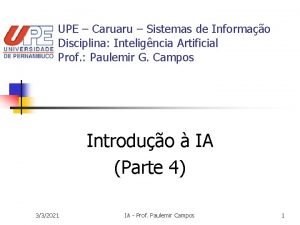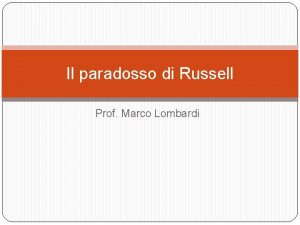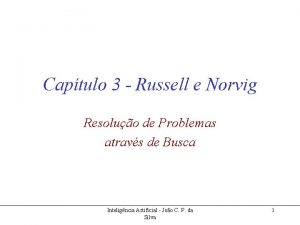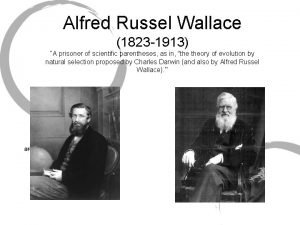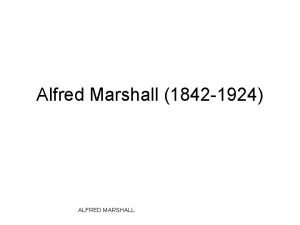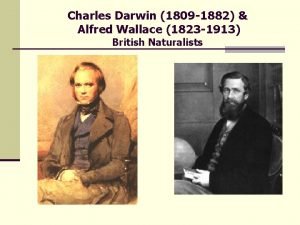Who Was Alfred Russel Wallace Alfred Russel Wallace










- Slides: 10


Who Was Alfred Russel Wallace? Alfred Russel Wallace was a British naturalist, anthropologist and explorer. He is famous for jointly publishing his ideas about theory of evolution through natural selection with Charles Darwin. A photograph of Alfred Russel Wallace taken in Singapore in 1862.

His Early Life Wallace was born in 1823. He worked as a teacher. He loved collecting beetles. In 1848, he decided to travel to the Amazon to find out about the animals that lived there. He stayed for four years. While he was in the Amazon, he collected thousands of specimens, which included beetles, butterflies and birds.

Wallace’s Work When Wallace was returning from his trip to the Amazon, disaster struck! His ship caught fire and sank. Four years’ worth of notes, drawings and collections were lost to the seas. Determined not to give up, he began planning an expedition to south-east Asia.

The Malay Archipelago On his next trip, Wallace spent eight years travelling through Malaysia and Indonesia. As he travelled, he collected 125, 660 specimens, including over 5000 new species. He noticed distinct differences between areas where certain animals were found. Wallace drew an imaginary line that divided the region into two parts. One part showed the animals found in the Australian region; the other showed the animals found in the Asian region. This line later became known as the Wallace Line. Malaysia Indonesia

Wallace and Darwin Wallace concluded that species adapted and changed to suit their environment, passing on their characteristics to their offspring. If a species couldn’t adapt, it would die out. He wrote to Charles Darwin who had similar ideas about evolution and, in 1858, they jointly published a paper outlining their theories. This paper changed the way people thought about animals and plants. Charles Darwin in 1854

The Theory of Evolution In 1859, Darwin published his book ‘On the Origin of Species’. It is because of this that he is more widely known as the man who discovered evolution by natural selection. In reality, both men came to the same conclusion at a similar time. Wallace continued to study and write. During his lifetime, he wrote over 20 books and published over 1000 articles and letters.

Wallace’s Legacy Alfred Russel Wallace died in November 1913. His adventurous spirit and curiosity had led to the development of theory of evolution. Ahead of his time, he warned that deforestation would have a devastating effect on the world’s climate. In a book called ‘The World of Life’, he wrote ‘never before has there been such widespread ravage of the Earth's surface by destruction of native vegetation and with it of much animal life’.

Glossary anthropologist: Someone who studies the origin and development of humans. deforestation: Cutting down and clearing forests. evolution: The theory that all living things today developed from earlier types. naturalist: A person who studies plants and nature. natural selection: The process where living things that are better adapted to their environment survive and have offspring: Human or animal child. specimens: Individual animals, plants or minerals that are used as examples.





